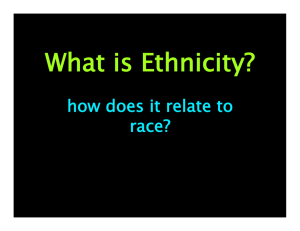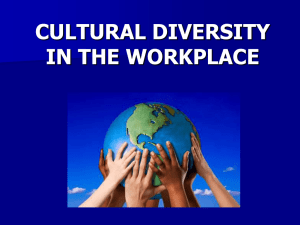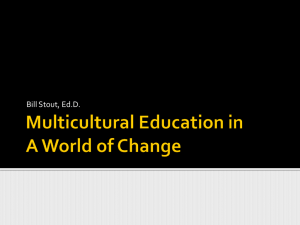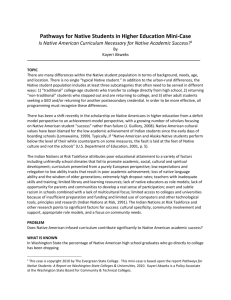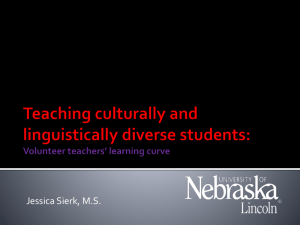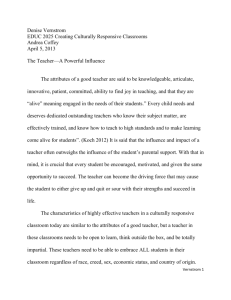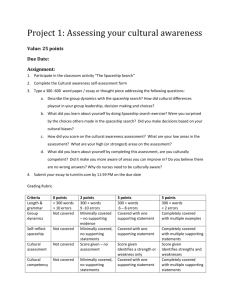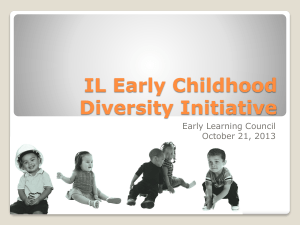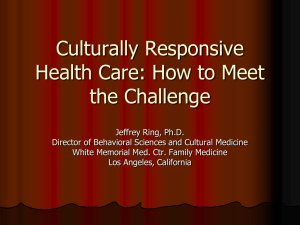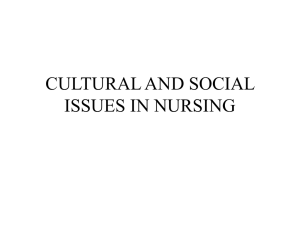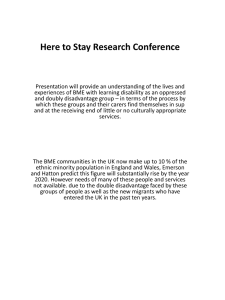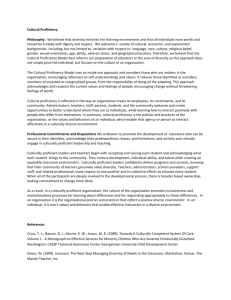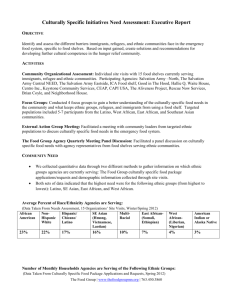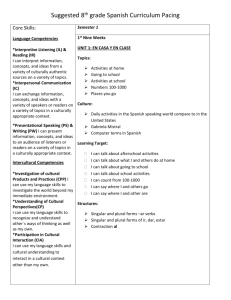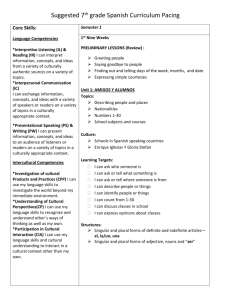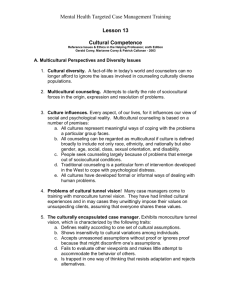Introduction to Cultural Diversity
advertisement
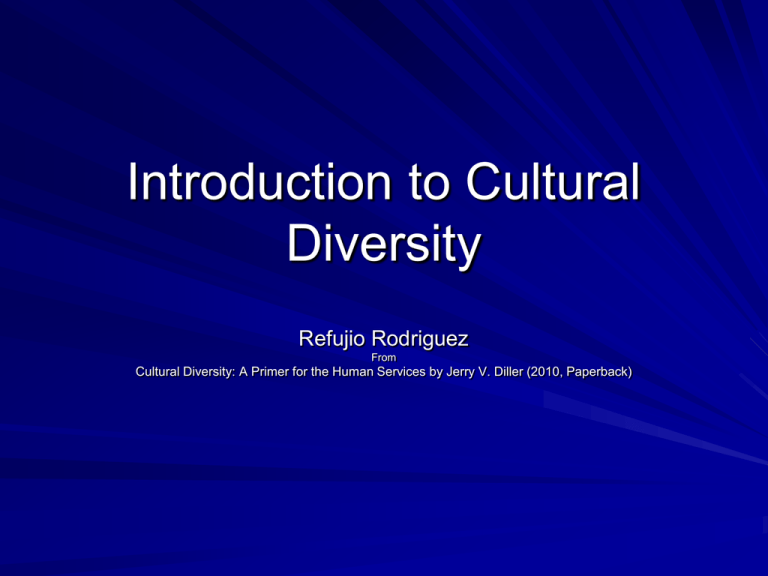
Introduction to Cultural Diversity Refujio Rodriguez From Cultural Diversity: A Primer for the Human Services by Jerry V. Diller (2010, Paperback) Why Culturally Different Clients Underutilize Mainstream Agencies Mainstream agencies may inadvertently make clients feel uncomfortable or unwelcome. Clients may not trust the motives or abilities of providers because of past experiences with the system. Clients may believe that they will not be understood culturally or will not have their needs met in a helpful manner. Clients may be unfamiliar with the kinds of services available or come from a culture in which services are conceived very differently. What is Discrimination in This Context? It is BEING UNAWARE: of one’s own prejudices and how they may inadvertently be communicated to clients; of differences in cultural style, interactive patterns, and values, and how these can lead to miscommunication; that many of the theories taught during training are culture-bound; of differences in cultural definitions of health and illness as well as the existence of traditional cultural healing methods; and of the necessity of matching treatment modalities to the cultural style of clients or of adapting practices to the specific cultural needs of clients. Baggage Both clients and providers come to their interactions with baggage about the ethnicity of the other. – Clients may feel mistrust, anger, fear, suspicion, or deference. – Providers may respond with feelings of superiority, condescension, discomfort, fear, or inadequacy. These reactions may be subtle or covered up, but they will be there. Providers must not take them personally. A good strategy is to acknowledge them and raise them as a topic for discussion. Usefulness of Cultural Competence With clients from different cultures With clients who are different in other ways (besides culturally): – – – – – – – Class Gender/gender identity Age Geography Social and political leanings Ableness/disability Religion Terminology Used in the Text Cultural diversity—the array of differences that exist among groups of people with definable and unique cultural backgrounds. Culturally different—used synonymously with cross-cultural or ethnic and implies that the client comes from a different culture than the provider; suggests no value judgment about the superiority of one culture over another. Culture—a lens through which life is perceived; each culture, through language, values, personality and family patterns, worldview, sense of time and space, and rules of interaction, generates a phenomenologically different experience of reality. Thus, the same situation or event may be experienced and interpreted very differently depending on the cultural background of individual clients and providers. Terminology, continued Ethnic group— any distinguishable people whose members share a common culture and see themselves as separate and different from the majority culture; their observable differences frequently serve as a basis for discrimination and unequal treatment within the larger society. Racial group or race—a biologically isolated, population with a distinctive genetic heritage. This biological concept does not mean the same thing as the concept commonly used to define group differences; that concept of race is scientifically invalid. People of Color or Clients of Color—terms used to refer to non-White clients. Terminology, concluded Communities of Color— collectives of ethnic groups who share certain physical, cultural, language, or geographic origins/features; identified by the term or referent preferred by members of that group (e.g., African Americans, Latinos/as, Native Americans, and Asian Americans). Whites—members of the dominant or majority group members whose origins are Northern European. White ethnics—dominant or majority group members whose origins are not Northern European. Examples of Problems, cont. Many Latinos/as and Asians, as immigrants, face ongoing dilemmas regarding assimilation, bilingualism, and the destruction of traditional family roles and values. Native Americans, as victims of colonization in their own land, have faced destruction of traditional ways and identities. African Americans, as victims of slavery, have faced similar issues. White ethnics find themselves suspended between two worlds—culturally different yet perceived, and often wishing to be perceived, as part of the majority. Assessing Clients’ Demographic and Cultural Situations Ask about: – – – – – – – – – – – – Place of birth Number of generations in America Family roles and structure Language spoken at home English fluency Economic situation and status Amount and type of education Amount of acculturation Traditions still practiced at home Familiarity and comfort with Northern European lifestyle Religious affiliation Community and friendship patterns Examples of Cultural Racism

